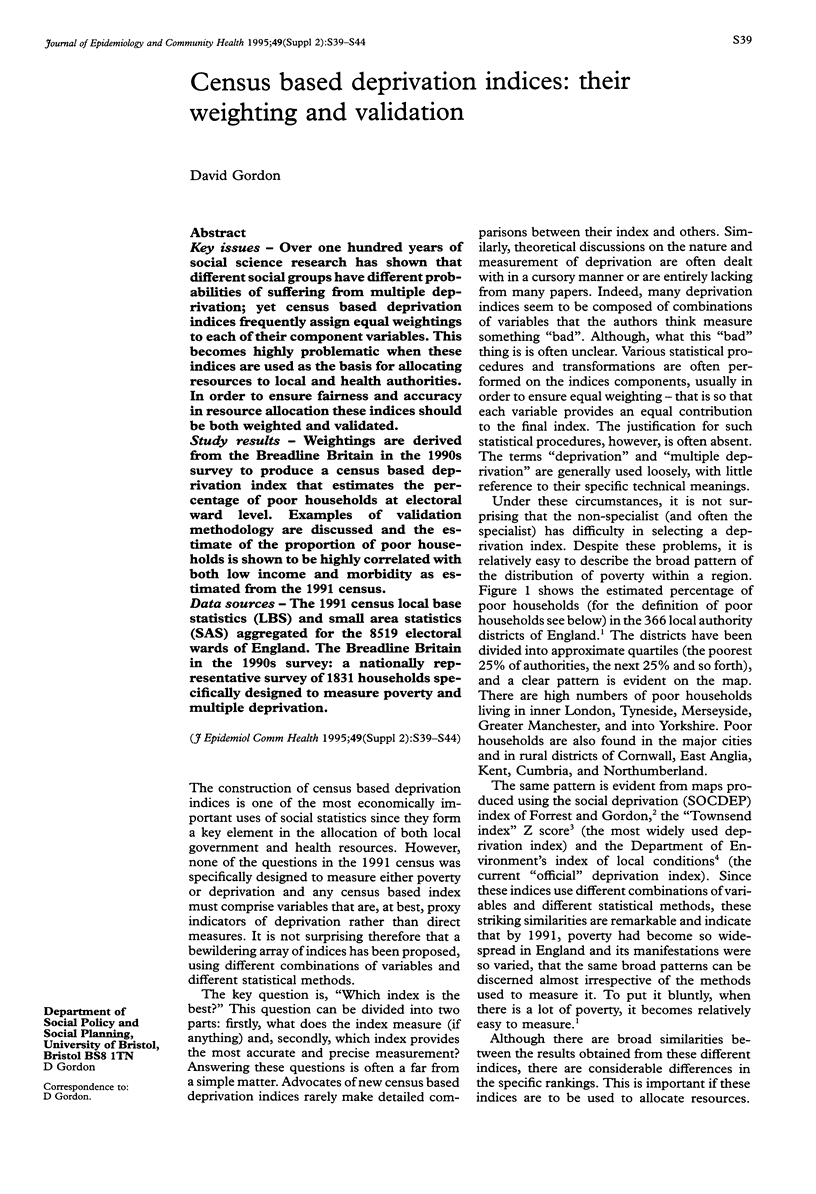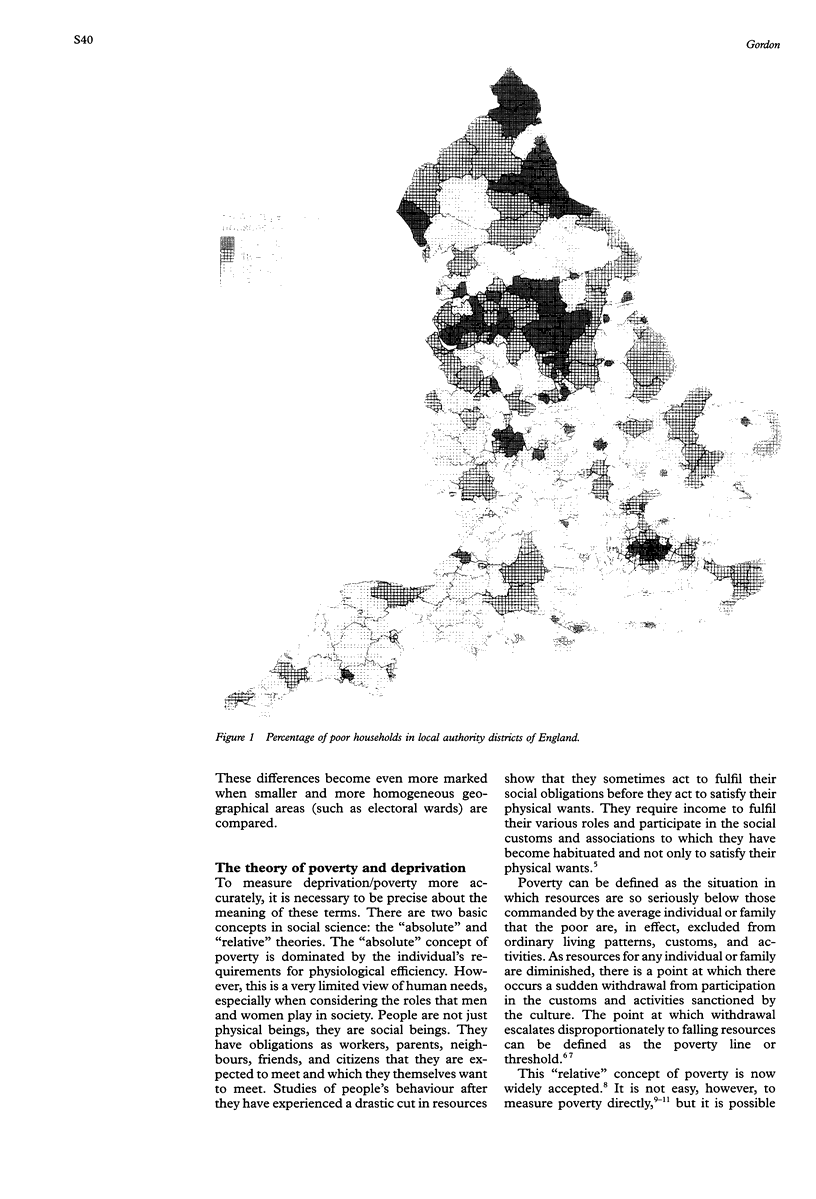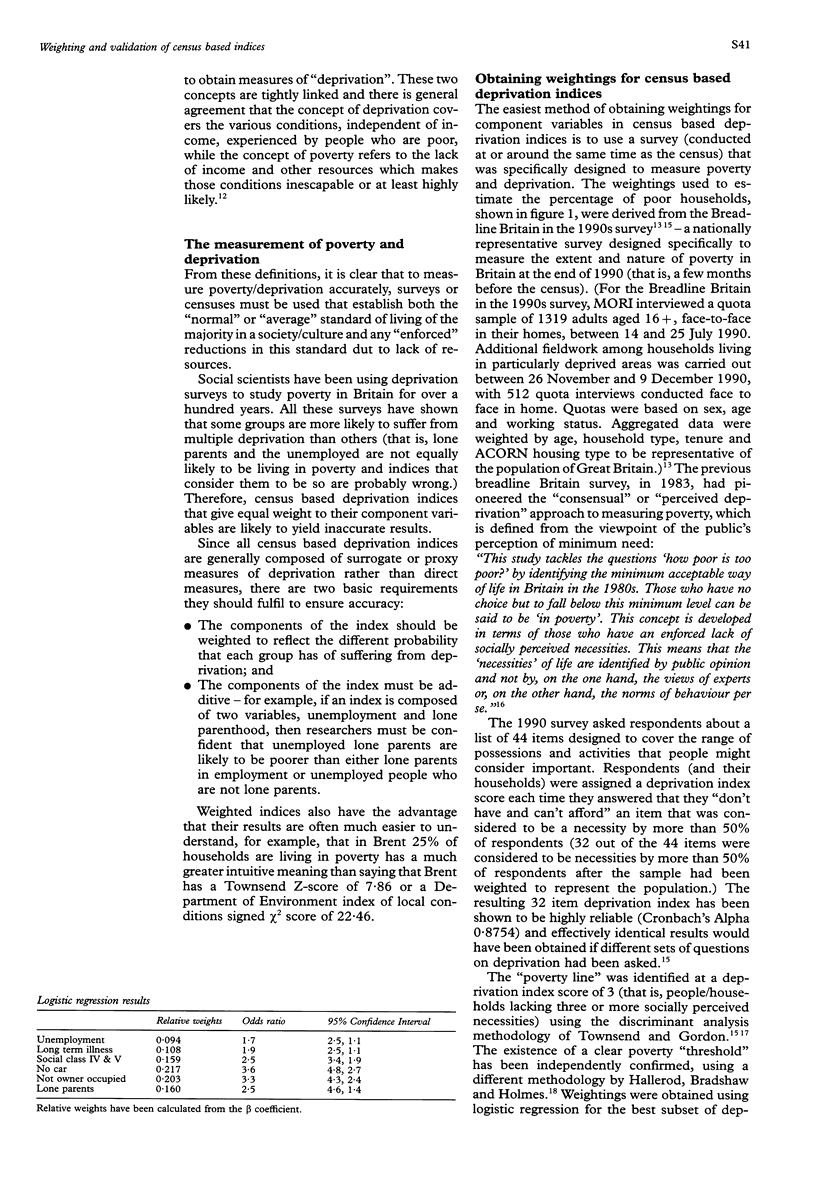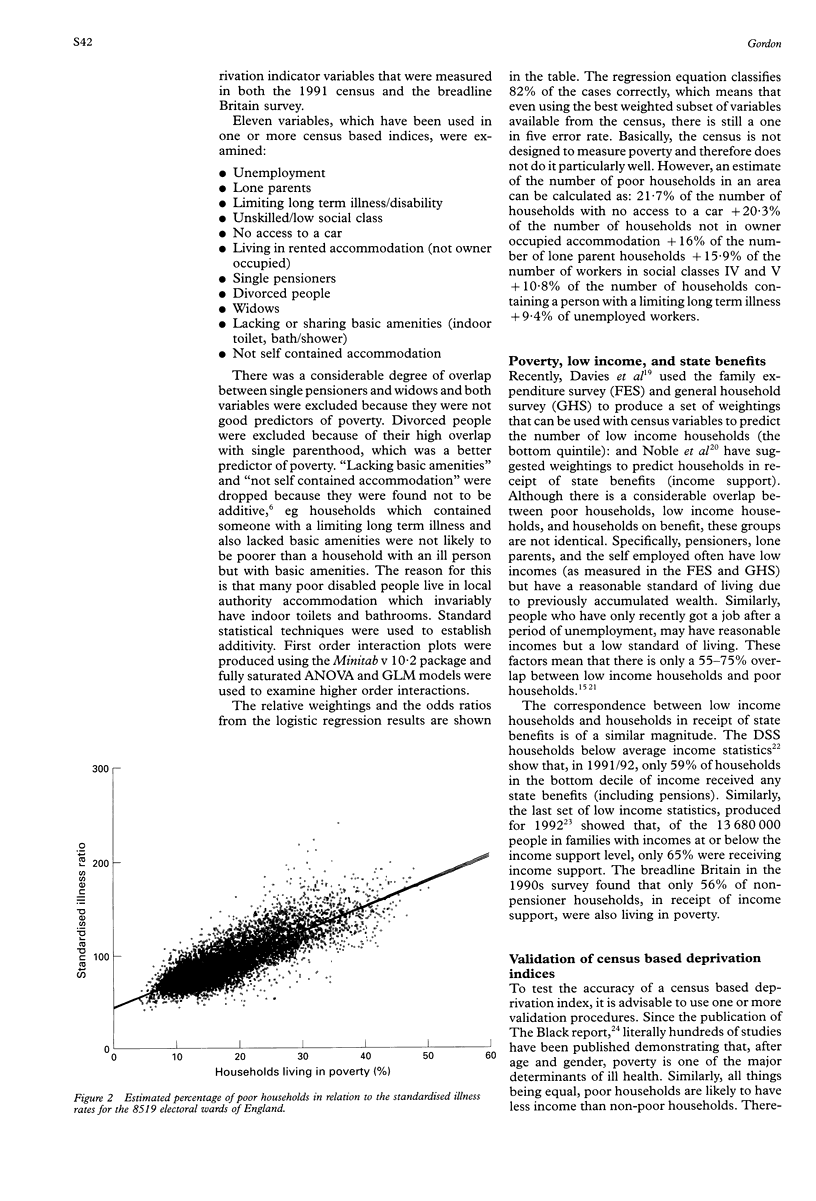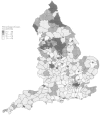Abstract
KEY ISSUES--Over one hundred years of social science research has shown that different social groups have different probabilities of suffering from multiple deprivation; yet census based deprivation indices frequently assign equal weightings to each of their component variables. This becomes highly problematic when these indices are used as the basis for allocating resources to local and health authorities. In order to ensure fairness and accuracy in resource allocation these indices should be both weighted and validated. STUDY RESULTS--Weightings are derived from the Breadline Britain in the 1990s survey to produce a census based deprivation index that estimates the percentage of poor households at electoral ward level. Examples of validation methodology are discussed and the estimate of the proportion of poor households is shown to be highly correlated with both low income and morbidity as estimated from the 1991 census. DATA SOURCES--The 1991 census local base statistics (LBS) and small area statistics (SAS) aggregated for the 8519 electoral wards of England. The Breadline Britain in the 1990s survey: a nationally representative survey of 1831 households specifically designed to measure poverty and multiple deprivation.
Full text
PDF